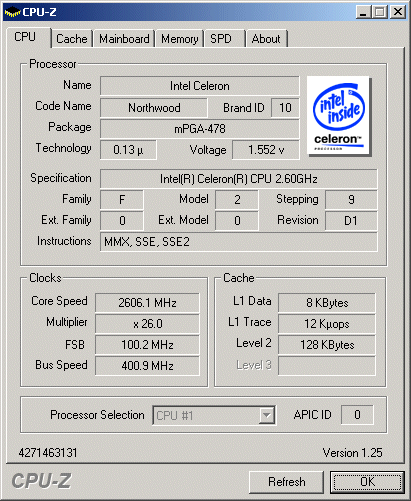The Mother of All CPU Charts Part 1
Socket 478: July 2001 To March 2004
| Pentium 4/1300 to 2800: | July 2001 to March 2004 |
| Celeron 1700 to 2930: | July 2001 to October 2004 |
| Pentium 4 EE 3200 to 3400: | September 2003 to March 2004 |

Socket 478 was introduced at the same time as the Pentium 4 with Northwood core, which at 512 kB had an L2 cache that was twice the size of its predecessor. The same platform also came with RD-RAM (Rambus), SD-RAM and DDR-RAM. But Rambus (RD-RAM) was the first. From the Pentium 4 with 2.4 GHz onward, the 133 MHz FSB with (533 QDR) was introduced and the memory manufacturers even offered RD-1066 memory with a bandwidth of 3.3 GB/s for it. This ensured the right performance and allowed record levels to be achieved in video encoding.
However, financial success was still lacking: Specifically because RD-RAM was used, the platform became very expensive. But to improve the sales and acceptance of the P4 CPUs, Intel offered an SD-RAM solution with the new 845 chipset that for licensing reasons initially ran without DDR support. This solution was considerably cheaper, but was limited to only a third of the memory transfer rate. In order to have a selling point in spite of everything, many video encoding tools such as the legendary FlaskMPEG were optimized for SSE2 and gained an enormous boost in performance. Even encoding in real time was now possible. The small circle of fans gathered around the P4 was thrilled.
After the long-awaited expiration of the license agreement with Rambus, Intel presented the 845D chipset - and somewhat later, the 845GD. Both now supported DDR memory, although optimizations made the 845GD somewhat faster than the D version and was only offered with integrated graphics. Still, a memory transfer rate of 2 GB/s was considerably slower than the potent and dismissed Rambus solution.
Stay on the Cutting Edge
Join the experts who read Tom's Hardware for the inside track on enthusiast PC tech news — and have for over 25 years. We'll send breaking news and in-depth reviews of CPUs, GPUs, AI, maker hardware and more straight to your inbox.
Current page: Socket 478: July 2001 To March 2004
Prev Page Socket 423: November 2000 To August 2001 Next Page Socket 478: July 2001 To March 2004, ContinuedTom's Hardware's dedicated news crew consists of both freelancers and staff with decades of experience reporting on the latest developments in CPUs, GPUs, super computing, Raspberry Pis and more.
-
Rare Intel Pentium P5 wafer with chips:Reply
http://www.chipsetc.com/intel-journey-inside-educational-chip-kits.html
Most Popular


